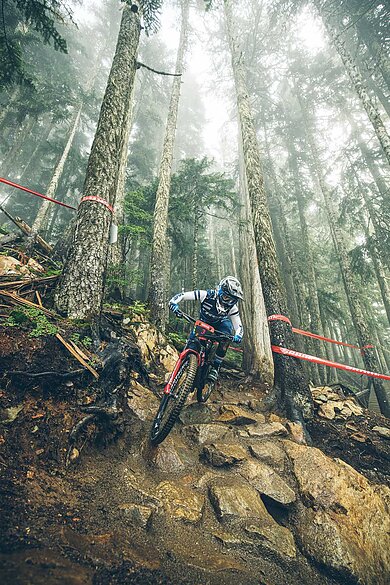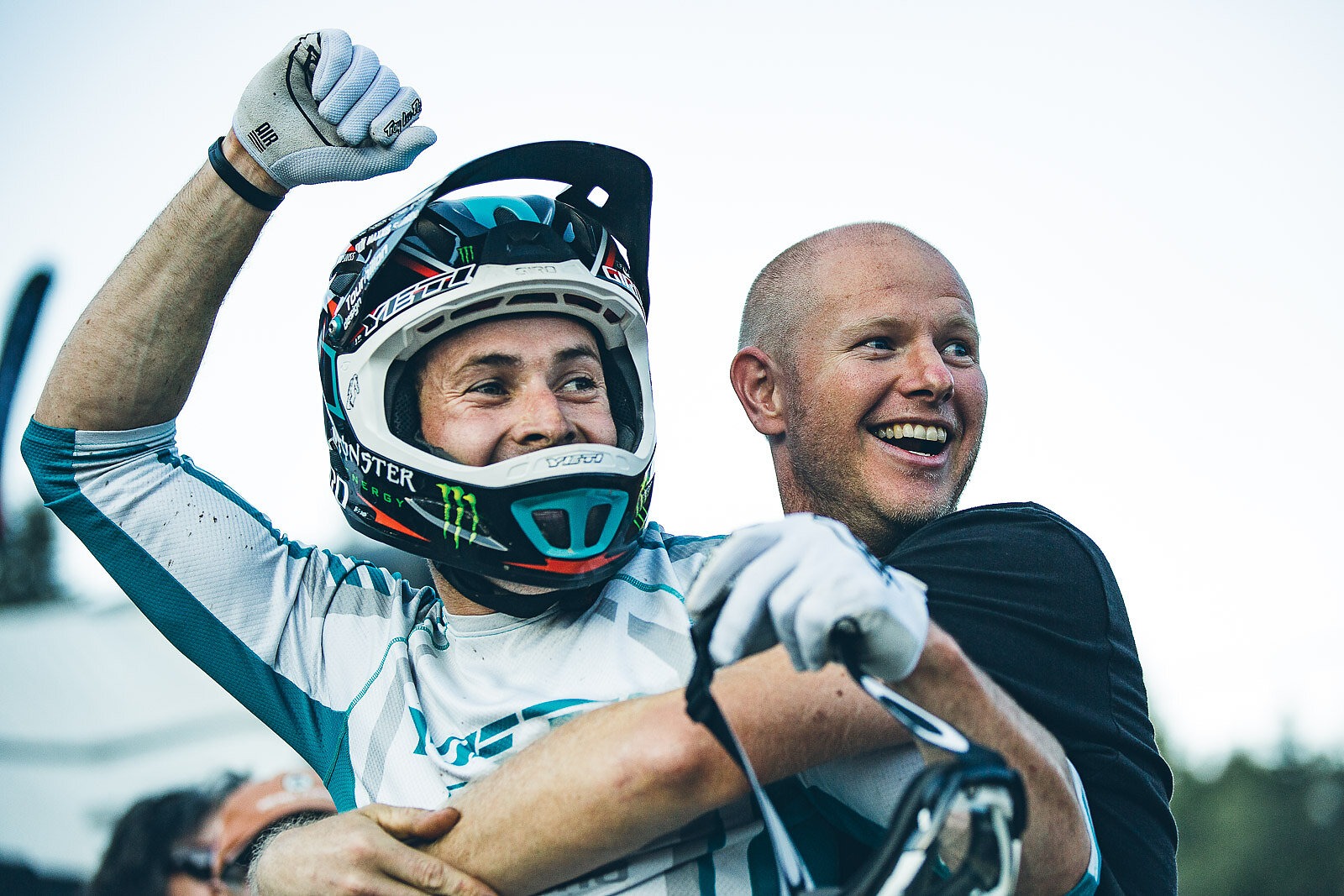
The Tallest Order Crankzilla's Defining Role in the Evolution of Enduro Racing
Photos by Anthony Smith
After more than a decade of notoriety for being one of the world’s most demanding sufferfests, the Crankworx Whistler enduro race will be going back to its roots this year as the Canadian Open Enduro— the same as its stunning debut in 2013, when five grueling stages pushed the world’s top racers to their outer limits.
At that time, North American enduro racing was still in its infancy. The moto-inspired race format, born in southern Europe and meant by its originators to replicate the everyday experience of mountain bikers chasing their friends down their favorite descents, had captured the world’s imagination. But while enduro’s action-packed nature and lively atmosphere was appealing to many, race directors and course designers outside of Europe were still trying to wrap their heads around the logistics for such massive endeavors.


Some of them had traveled to southern Europe to participate in enduro events such as the six-day Trans-Provence point-to-point race in France and Italy (now reincarnated as the Stone King Rally), and they’d latched onto the idea of covering as much ground as possible in a showcase of an area’s rowdiest trails. They also appreciated the laid-back, convivial ambience of these gatherings and felt that they embodied the essence of what mountain biking is to most riders. Yet fusing all of this together in a one day event, at the world’s biggest mountain bike festival, would prove to be a tricky undertaking.
“So few people knew what Whistler was outside of the bike park, and we wanted to show people all the fun and technical trails throughout the valley,” says Seb Kemp, an English transplant to Whistler who was consulted by Crankworx on the inaugural race’s course design. “We’d never run anything of this scale in the valley, and in our desire to show off the best trails, we really packed in a lot.”
With five punishing stages covering all sides of the Whistler Valley—each requiring a taxing climb back to the top—even the world’s toughest racers had to draw deep into their physical and psychological reserves to complete the race. There were timed descents of some of Whistler’s steepest trails, including Top of the World, Khyber Pass, Pura Vida, and It’s Business Time, testing even the most talented bike handlers over one very long day. It was agonizing for many, and there was no shortage of tears shed by participants.

“It was just really, really hard for everyone,” says Kemp, now the global brand director for Santa Cruz Bicycles. “The trails are so steep and technical, and they’re really hard to ride at full race pace. And when racers are exhausted, they can be dangerous. People were stressed, and the timing for racers to get from one stage to the next was super tight. It was so crazy hard that people started calling it ‘Crankzilla.’”
Despite the hardships, many top racers claimed it was a fitting test of their overall abilities, and some issued massive praise for the event. There was no question that it had set a new paradigm for toughness. And it had everyone in the enduro scene talking about how it could impact courses around the globe in the newly formed Enduro World Series.
Though a consensus toward moderation was eventually formed, and the Whistler race was toned down in subsequent years, it has remained one of the standards by which all enduro races are measured. Over the past decade, it has been a major proving ground for the planet’s greatest racers, and a podium finish at the Crankworx Whistler Enduro has become one of the sport’s biggest milestones. The list of winners is stacked with some of the most legendary names in mountain biking’s history: Anne-Caroline Chausson, Jared Graves, Tracy Moseley, Sam Hill, Cécile Ravanel, Jesse Melamed, and Richie Rude, to name just a few.
This year’s race will have special significance, as the Canadian Open Enduro will double as the 2023 Canadian Enduro Championships, with national championship titles being awarded at the event. With the former Enduro World Series circuit now operating under the umbrella of Union Cycliste Internationale (UCI) and rebranded as UCI World Cup events, this year’s Whistler race has not been included on the World Cup tour, so Cycling Canada is stepping in to sanction the event under the newly revived Canadian Enduro League. The 2023 race also features an increase in prize money, with elites competing for their share of a $20,000 prize purse, to be split between the men’s and women’s events.

“I can’t overstate how influential the Crankworx enduros have been to my career,” says Whistler local Jesse Melamed, a hometown favorite who won the Whistler enduro in 2017, and again in 2022 on his way to becoming the overall Enduro World Series champion. “They have been providing top-level races that host the best racers in Canada and beyond since I started. It has been the proving grounds for many Canadian racers, helping us to prepare to take on the Enduro World Series.”
Looking back to the race’s groundbreaking origins, the Crankworx Whistler enduro has played a formative role in the evolution of a discipline that has come to define what mountain biking is. And that all started from the desire to showcase the Whistler Valley’s finest trails.
“Sometimes you need to really push hard with the anchor to get it to drag where it needs to go,” says Kemp. “We needed to spin the pendulum too far so we could eventually find that middle ground. We needed to throw people into the deep end to really have an impact.”





